Wildlife Rescue in Arizona | Meet the Ambassadors
Animals that are found or surrendered that can’t be released back into the wild, sometimes become Arizona Game and Fish Department ambassadors. They help us educate others about the importance of contacting the Department instead of attempting a rescue when a wild animal is found all alone.

Hunter : Bobcat
Hunter was found as a kitten, hidden behind pallets of blocks on a construction site near Casa Grande. Mom was nowhere to be found, and sadly Hunter’s two siblings did not survive.
The well-meaning person who found Hunter decided to keep and raise him, resulting in him imprinting (or getting attached) to humans and never having a chance to learn survival skills. Unfortunately, this meant Hunter could never safely return to his home in the wild.
Today, Hunter is an Arizona Game and Fish ambassador who helps teach the public about native live wildlife.
Q-Tip: Turkey vulture
Two boys hiking near Globe found Q-Tip as a downy chick in a small cave. Because they didn’t see adult birds around, the boys brought the chick home hoping to keep it. But, their mom took one look—and one whiff—and told the kids they couldn’t keep this wild thing.
AZGFD was called to examine the chick and take her in, as the boys couldn’t remember where they had found her so she could not be returned.
This human intervention lead to the chick having to be hand-raised and unable to be released back into the wild. It’s a good reminder that chances are, wildlife that looks abandoned is probably just fine and the parents are likely out hunting or foraging.
Maggie: Golden eagle
This gorgeous eagle was feeding on roadkill along the I-40 near Williams and unfortunately flew up into a passing semi-truck.
At first, the Wildlife Center staff believed she just had minor injuries and feather damage. But as she healed and was re-trained to hunt with the hopes of returning him to the wild, they discovered a much more serious injury—Maggie was blind in one eye. As she tried to hunt live prey, her lack of depth perception was clearly an issue, a problem that would leave her to slowly starve if released back into the wild.
Stubby: Gila monster
Stubby was run over while trying to cross a road in Phoenix. Though they’re known to be venomous, a concerned motorist captured the injured lizard and brought him to our Wildlife Center.
Sadly, Stubby lost half of his tail as a result of the trauma—and that’s how he got his name.
This may not seem like a terrible injury, but Gila monsters actually store fat in their tales. Without it, Stubby would likely have starved if returned to the wild
Tesla: Red-tailed hawk
Tesla had an unfortunate interaction with overhead power lines, resulting in him being electrocuted. This traumatic injury caused severe damage to some of the tissue and bone on one of his wings, leading the Wildlife Center no choice but to amputate part of the wing.
Without the ability to fly, Tesla lives permanently at our Wildlife Center and has become one of our most popular ambassadors.
Want to Get Involved with Wildlife Conservation?
Volunteer your time, or donate to help us with conserving and protecting our wildlife. When you purchase a hunting or fishing license online, resources go back into wildlife conservation.
donate to wildlife conservation
With your help, we can continue to conserve & protect Arizona’s wildlife.
volunteer for projects
If you have a passion for wildlife and want to help us conserve and protect it, we’d love to have you on our team!
